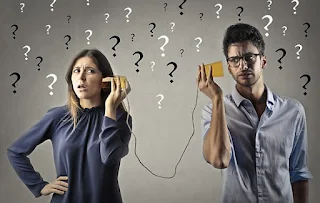Communication
COMMUNICATION
Description also available in video format (attached below)
Introduction
Health Communication: The technique and art of informing, motivating and influencing individuals, groups, communities, institutes etc., about various health related issues.
Process
of Communication
1)
Process parts
·
Sender
(person that delivers the message)
·
Receiver
(person that is getting the message)
·
Message
(information that a sender is relaying to receiver)
·
Communication
channel (methods used to send the message)
·
Decoding
(receiver done the interpretation of the message)
·
Feedback
(response of receiver sent to the sender)
2)
Process steps
·
Developing
the message (strategically developing the messages for various audiences)
·
Encoding
the message (the developed messages translated into a form that can be
transmitted, either text, video etc.)
·
Selecting
the channel (selection of most appropriate channel to reach the targeted
audiences, includes YouTube, Facebook, Instagram etc)
·
Message
transmission (successfully transmission of message to the receiver by sender)
·
Decoding
the message (how a receiver interpret, translate and understand the message)
·
Feedback.
Types of Communication
1)
Verbal
Communication
·
It
is a type of communication in which the message is transmitted in verbal form.
·
This
type of communication divided into two categories
i. Oral
Communication
a)
It
transmit the message in the form of spoken words, speech, face to face ,
telephonic call, radio, television etc.
b)
It
is quick in nature.
c)
The
main drawback is that the user fails to think deep about what he is delivering.
ii. Written Communication
a)
It
transmits the message with the help of written signs, symbols, email, letter,
report, blogs, meme etc.
b)
The
message can be edited and revised.
c)
This
type of communication doesn’t bring instant feedback.
2)
Non-Verbal
communication
·
It
is a type of communication in which message is transmitted in the form of
facial expression, gestures, postures etc.
·
This
type of communication have three elements
i. Appearance
(speaker looking style, room space, lightening, furnishing etc.)
ii. Body language
(gestures, postures, facial expression etc.)
iii. Sounds (Voice,
tone, volume etc.)
Functions
of Health Communication
1)
Information
(inform peoples about various health related issues)
2)
Education
(bring changes in lifestyle and reduce risk factors by educating the peoples)
3)
Motivation
(motivate the peoples to deal with the health related issues)
4)
Persuasion
(attempt to change the general beliefs, understanding & myth about any
health issue)
5)
Counselling
(counsel the patients & public and create health awareness)
6)
Raising
Morale (raise the capacity of a group of people to pull together consistently)
7)
Health
Development (diffuse knowledge in respect to the goals of development)
8)
Health
Organization (built an organization that works to promote health communication)
Principle of Communication
The
communication has a chain of 7Cs of principles
·
Conciseness
(message should be brief in nature)
·
Courtesy
(being aware about the feeling of receiver)
·
Correctness
(proper grammar, punctuation & spellings)
·
Clarity
(message should be accurate)
·
Completeness
(contains all the facts that needs for the reaction you desire)
·
Consideration
(trying to consider yourself as a receiver and then create a message)
·
Concreteness
(being specific, definite and vivid)
Barriers of Communication
1)
Physical Barrier
a.
Disturbance
from physical surroundings that effect the communication such as noise, infrastructure,
physical disability etc.
b.
Factors
causing physical barrier are
i. Distraction in
environment
ii. Distance
iii. Defect in media
c.
This
barrier can be overcome by
i. Updated with
latest technology
ii. Choosing a
suitable environment
iii. Removing
obstacles
2)
Cultural Barrier
a.
Similar
word can mean different things to people from different culture such as the
kissing is a common part of French culture.
b.
Factors
causing cultural barrier are
i. Diversified
background
ii. Accent, behaviour
and nature
iii. Religion
c.
This
barrier can be overcome by
i. Cross culture
environment
ii. Having a
thorough knowledge of your culture
iii. Working in
groups
3)
Language
Barrier
a.
A
barrier of communication that occurs between peoples who are unable to speak a
common language such as a talk show of an Arabic person with the Indian one.
b.
Factors
causing language barrier are
i. Multi language
ii. Region
iii. Inadequate
vocabulary
c.
This
barrier can be overcome by
i. Ask for
clarification
ii. Correctly choose
your medium of communication
iii. Be specific
4)
Emotional
Barrier
a.
A
mental block that influences how you perceive the other actions & feelings
such as dominating a conversation on a religious issue.
b.
Factors
causing emotional barrier are
i. Fear
ii. Insecurity
iii. Stress
c.
This
barrier can be overcome by
i. Peer support
ii. Expressing recognition
iii. Commitment to
change
5)
Gender Barrier
a.
Obstacles
that obstruct the communication on the basis of gender such as during decision
making women’s are process oriented and men’s are product oriented in nature.
b.
Factors
causing gender barrier are
i. Fear
ii. Shy
iii. Misunderstanding
c.
This
barrier can be overcome by
i. Deal with patience
ii. Pay attention
iii. Understand each
other
6)
Organizational
Barrier
a.
All
internal factors that stymie or block the process of communication such as hierarchy
of the organization.
b.
Factors
causing organization barrier are
i. One way flow
ii. Rules and
regulations
iii. Levels in
organization
c.
This
barrier can be overcome by
i. Create a culture
of listening
ii. Make communication
a necessity
iii. Unite the vision
7)
Perceptual
barrier
a.
Preferences,
values, attitudes, origins and experience that act as a filters in observing
the peoples, events and information such as facial gestures
b.
Factors
causing perceptual barriers are
i. Difference in
understandings
ii. Difference in
perception and reality
iii. Difference in values
c.
This
barrier can be overcome by
i. Start listening
others
ii. Clarify if there
is confusion
iii. Stay calm and be
positive
Video
description
o Visit our Let’s contribute page https://keedainformation.blogspot.com/p/lets-contribute.html
o Follow our page
o Like & comment on our post




Comments